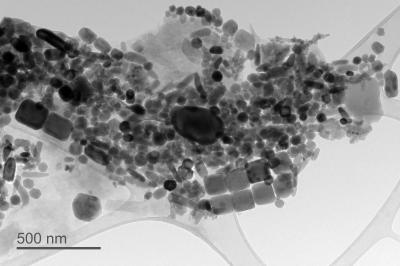
Credit: Courtney Wagner/University of Utah
Fifty-six million years ago, as the Earth’s climate warmed by five to eight degrees C, new land mammals evolved, tropical forests expanded, giant insects and reptiles appeared and the chemistry of the ocean changed. Through it all, bacteria in the ocean in what is now New Jersey kept a record of the changes in their environment through forming tiny magnetic particles. Now, those particles and their record are all that’s left of these microorganisms. Thanks to new research tools, that record is finally being read.
In research published in the journal Paleoceanography and Paleoclimatology, researchers including University of Utah doctoral student Courtney Wagner and associate professor Peter Lippert report the climate clues that can be found by analyzing the magnetic fossil particles, or magnetofossils.
“We interpret the relative abundances of these different populations of magnetofossils based on shape and size, which are a function of bacteria species, to encode environmental changes that are not as apparent in other fossil data sets or geochemical proxies,” Lippert says.
Using their FORC method (which stands for first-order reversal curves, a way of magnetically measuring and statistically describing the magnetic signatures in a sample of rock or sediment) they teased out three different subsets of magnetofossils from ancient coastal marine sediments.
“Each of the magnetofossil populations tells us something a little different about the environment,” Wagner says. One consists of “giant needle-shaped” magnetofossils, associated with increased iron and an expansion of a gradient between oxygenated and deoxygenated seawater. Another contains “equant” magnetofossils, which may record more stable, long-term conditions in the ocean and the last contains “elongated” magnetofossils, which may indicate seasonal conditions.
The results are important because they allow researchers to track the chemistry of the ocean throughout a global warming event similar to what the Earth is currently experiencing. For example, the results seem to show that the New Jersey coast rapidly declined in oxygen near the beginning of the ancient warming event and then oxygen levels fluctuated thereafter.
“All this has potential implications for understanding how climate change will affect these sensitive coastal ecosystems today and in the future,” Wagner says.
###
Media Contact
Paul Gabrielsen
[email protected]
Original Source
https:/
Related Journal Article
http://dx.




